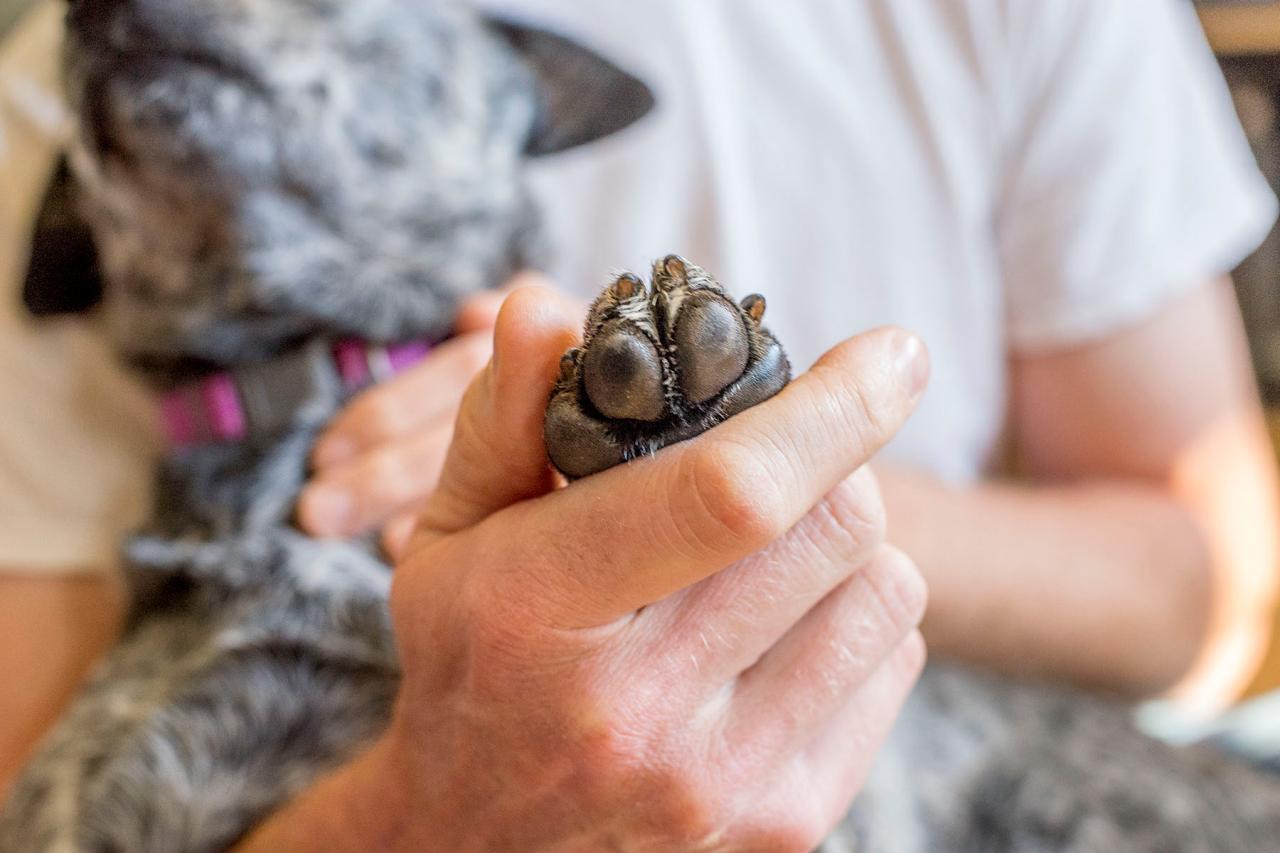If you're a dog owner, you know that your furry friend's health is of utmost importance. Among the many health issues that can affect dogs, cataracts are a common concern. In this article, we will delve into what dog cataracts are, their causes, types, symptoms, diagnosis, treatment options, prevention strategies, and how to support a blind dog. By the end, you'll have a comprehensive understanding of this eye condition and how to ensure your dog's eye health.
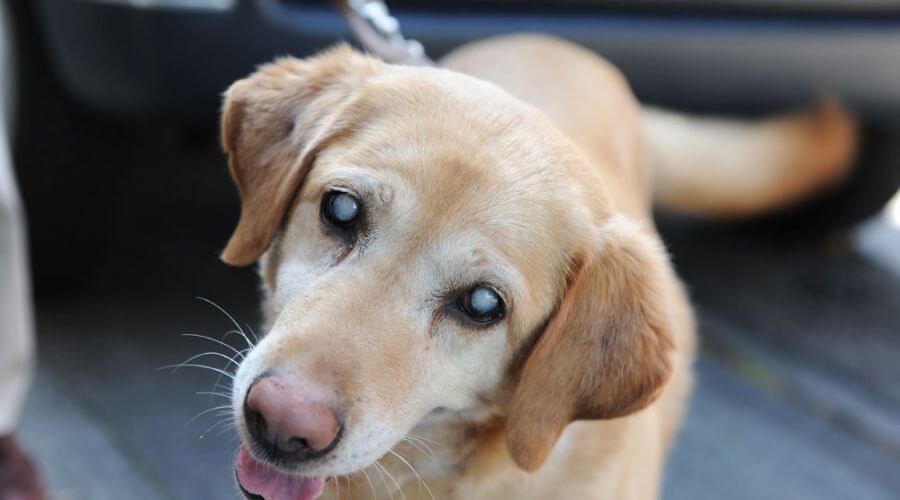
What are dog cataracts?
Cataracts in dogs refer to the clouding of the eye's natural lens, leading to impaired vision. This condition is similar to cataracts in humans and can affect one or both eyes. Cataracts obstruct the passage of light to the retina, causing blurred or foggy vision.
Prevalence of cataracts in dogs
Cataracts are not uncommon among dogs. They can develop at any age, but they are more prevalent in older dogs. Certain breeds are also more predisposed to cataracts due to genetic factors.

Causes of Dog Cataracts
Cataracts in dogs can develop due to various factors, with some being genetically predisposed while others arise from environmental influences and medical conditions. Understanding the underlying causes is crucial for effective prevention and management.
- Genetic Predisposition: Certain dog breeds inherit a higher susceptibility to cataracts. Breeds like the Siberian Husky, Boston Terrier, and Miniature Schnauzer are particularly prone. These genetic predispositions make them more susceptible to cataract formation, often at an earlier age.
- Age-related Cataracts: Just as in humans, aging can be a primary factor in the development of cataracts in dogs. Over time, the eye's lens may naturally become less transparent, leading to cataracts. Age-related cataracts tend to affect senior dogs, and their progression can vary.
- Diabetes Mellitus: Dogs with diabetes are at an increased risk of developing cataracts. Elevated blood sugar levels can cause changes in the proteins within the eye's lens, leading to cloudiness and opacity. This form of cataract, known as diabetic cataract, is a well-documented complication of diabetes in dogs.
- Trauma or Injury: Physical trauma to the eye can cause cataracts to form. Injuries that impact the lens can disrupt its natural structure, resulting in cloudiness. Even seemingly minor incidents can sometimes trigger cataract development.
- Congenital Factors: In some cases, cataracts are present in a dog's eyes from birth. These congenital cataracts may be inherited or result from developmental abnormalities during the prenatal period. Early detection and intervention are crucial in such cases.
- Inflammatory Conditions: Certain inflammatory diseases, like uveitis, can contribute to cataract formation. The inflammation in the eye can disrupt the normal structure of the lens, leading to opacities.
- Nutritional Imbalances: A diet lacking essential nutrients, particularly antioxidants and vitamins, can impact overall eye health. Ensuring proper nutrition is essential for preventing cataracts.
Types of Dog Cataracts
Cataracts in dogs can manifest in different forms, depending on their location and appearance within the lens. Understanding the types of cataracts is vital for accurate diagnosis and appropriate treatment.
- Nuclear Cataracts: These cataracts form in the center (nucleus) of the lens. Nuclear cataracts often develop with age and are commonly associated with genetic predisposition.
- Cortical Cataracts: Cortical cataracts affect the outer layers of the lens. They often appear as white, wedge-shaped opacities that radiate from the edges of the lens towards the center.
- Posterior Subcapsular Cataracts (PSC): PSC cataracts occur on the back surface of the lens, just beneath the lens capsule. They can progress rapidly and have a significant impact on vision.
- Congenital Cataracts: These cataracts are present at birth or develop during early puppyhood. They can be genetic or result from prenatal factors.
- Secondary Cataracts: Secondary cataracts develop as a result of other eye conditions or trauma. They are often associated with uveitis, lens luxation, or previous eye surgery.
- Senile Cataracts: Senile cataracts, as the name suggests, occur in older dogs and are primarily age-related. They can affect various parts of the lens and vary in severity.
Symptoms of Dog Cataracts
Recognizing the symptoms of dog cataracts is vital for early intervention and ensuring the well-being of your canine companion. While cataracts can vary in severity, several common signs indicate their presence.
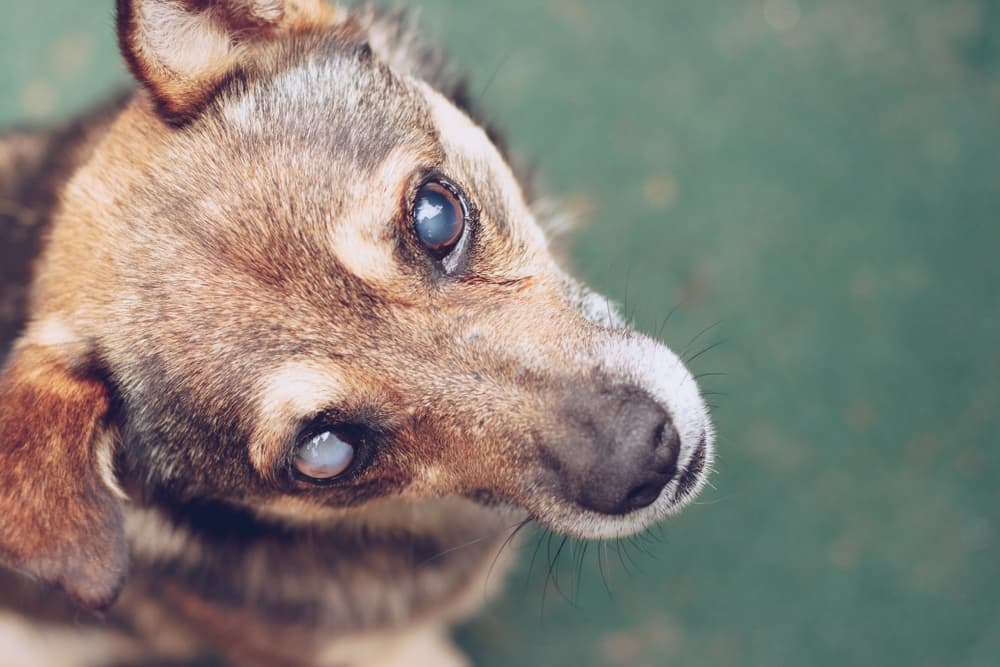
- Cloudy or Hazy Eyes: One of the hallmark symptoms of cataracts is the development of cloudiness or haziness in one or both of your dog's eyes. This clouding occurs as the lens loses its transparency and becomes increasingly opaque.
- Decreased Vision: Dogs with cataracts often exhibit a noticeable decrease in their vision. You may observe them bumping into objects, hesitating when navigating their surroundings, or experiencing difficulty tracking moving objects.
- Change in Eye Color: Another observable sign is a change in your dog's eye color. Typically, the eyes may appear cloudy or develop a gray or white discoloration due to the presence of cataracts.
- Squinting or Blinking: Dogs with cataracts may squint or blink excessively as they attempt to compensate for their reduced visual clarity. This behavior is a response to the discomfort and impaired vision caused by the cataracts.
- Increased Clumsiness: An increase in clumsiness and a reluctance to engage in activities that require precise vision, such as catching a ball or navigating stairs, may indicate cataracts.
- Bumping into Objects: Due to their compromised vision, dogs with cataracts may inadvertently bump into furniture, walls, or other objects in their environment.
- Reluctance to Go Outside: Some dogs with cataracts may become hesitant to go outside, especially in bright sunlight. The increased light sensitivity caused by cataracts can make outdoor activities uncomfortable.
- Lack of Interest in Play: As their vision deteriorates, dogs with cataracts may lose interest in playing or engaging in activities they once enjoyed.
Diagnosing Dog Cataracts
Accurate diagnosis of dog cataracts is a crucial step in determining the appropriate course of action. A veterinary examination and specialized testing are essential for confirming the presence and assessing the severity of cataracts.
- Veterinary Examination: The diagnostic process begins with a thorough examination by a veterinarian. They will assess your dog's overall health and examine the eyes for signs of cataracts. The vet will inquire about any observed symptoms and the duration of their presence.
- Ophthalmic Testing: To confirm the presence of cataracts and evaluate their extent, ophthalmic tests are conducted. These may include slit lamp biomicroscopy, indirect ophthalmoscopy, and other specialized techniques. These tests provide detailed insights into the location and severity of the cataracts.
- Visual Acuity Assessment: The veterinarian may assess your dog's visual acuity through behavioral tests. These tests gauge how well your dog can see objects at different distances and in various lighting conditions.
- Other Underlying Conditions: It's essential to rule out any underlying medical conditions that may contribute to the eye issues. This may involve blood tests to check for diabetes, as diabetic cataracts are common in dogs with diabetes mellitus.
- Photographic Documentation: In some cases, photographs of the eyes may be taken to document the progression of cataracts over time. This serves as a valuable reference for monitoring changes and evaluating treatment outcomes.
Treatment Options
Cataracts in dogs are a common eye condition that can lead to impaired vision or even blindness if left untreated. Fortunately, there are several treatment options available to address this condition. The choice of treatment depends on the severity of the cataracts and the overall health of the dog. Here are some of the primary treatment options for dog cataracts:
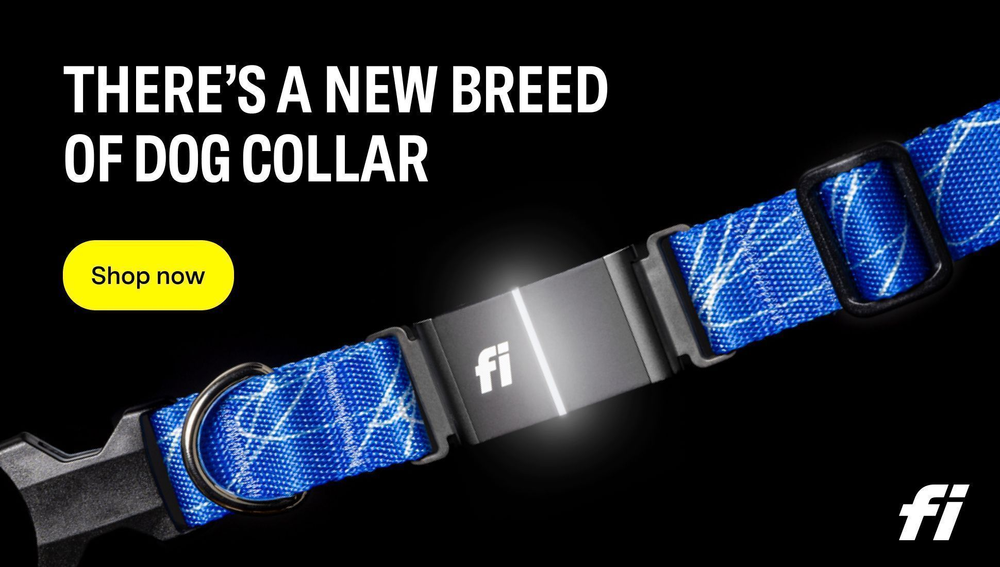
a. Surgical Removal:
- Surgical removal of cataracts is the most effective treatment for advanced cataracts in dogs.
- During the procedure, a veterinary ophthalmologist will remove the cloudy lens and replace it with an artificial intraocular lens (IOL).
- This surgery can significantly improve a dog's vision and quality of life.
- Post-operative care is crucial to ensure a successful outcome, including the use of prescribed eye drops and monitoring for complications.
b. Phacoemulsification:
- Phacoemulsification is a specialized cataract surgery technique that uses ultrasound energy to break up and remove the cloudy lens.
- It is less invasive than traditional cataract surgery and often results in faster recovery times.
- Phacoemulsification is suitable for dogs with both mature and immature cataracts.
c. Medical Management:
- In cases where surgery is not immediately possible or appropriate, your veterinarian may recommend medical management.
- This typically involves using topical medications, such as anti-inflammatory eye drops, to manage symptoms and slow the progression of cataracts.
- Medical management is often a temporary measure and may not fully restore vision.
d. Nutritional Supplements:
- Some veterinarians suggest adding specific antioxidants and nutrients to a dog's diet to support eye health.
- These supplements may help slow the progression of cataracts and maintain overall eye health.
Preventing Dog Cataracts
While not all cataracts can be prevented, there are steps you can take to reduce the risk of your dog developing this eye condition:
a. Regular Veterinary Check-ups:
- Schedule routine eye examinations with your veterinarian to detect cataracts early, especially in breeds prone to this condition.
b. Proper Nutrition:
- Feed your dog a balanced and nutritious diet to support overall health, including eye health.
- Antioxidants like vitamins C and E can be beneficial for eye health.
c. Eye Protection:
- Protect your dog's eyes from injury by avoiding situations where trauma is likely.
- Consider using protective eyewear or goggles for dogs in high-risk situations.
d. Manage Underlying Health Issues:
- Address any underlying health conditions, such as diabetes, that can increase the risk of cataract development.
e. Avoid Exposure to Harmful Substances:
- Limit your dog's exposure to tobacco smoke and other environmental toxins that can contribute to eye problems.
f. Genetics and Breeding:
- If you plan to breed your dog, be aware of its genetic predisposition to cataracts.
- Consult with a veterinarian or genetic counselor to make informed breeding decisions.
Coping with a Blind Dog
Caring for a blind dog can be a challenging but rewarding experience. When a beloved canine companion loses their vision, their owner needs to adapt and provide the necessary support to maintain their quality of life. Here are some key strategies for coping with a blind dog:
1. Veterinary Evaluation:
- When your dog's vision begins to deteriorate or if they suddenly become blind, seek immediate veterinary evaluation.
- Determine the cause of blindness and discuss treatment options or management strategies with your veterinarian.
2. Maintain a Consistent Environment:
- One of the most critical aspects of caring for a blind dog is consistency in their environment.
- Avoid moving furniture or objects that could be obstacles in your dog's path.
- Keep food and water dishes, as well as their bed, in the same locations.
3. Use Scent and Sound Cues:
- Dogs rely heavily on their sense of smell and hearing, especially when blind.
- Use strong scents or verbal cues to help your dog navigate and understand their surroundings.
- Consistently use keywords like "step up" or "step down" when approaching stairs or changes in terrain.
4. Dog-Proof Your Home:
- Remove hazards that could pose a threat to your blind dog, such as sharp objects or toxic substances.
- Consider installing baby gates to restrict access to certain areas and provide a safe, confined space.
5. Leash Walking and Guiding:
- Keep your blind dog on a leash when outdoors to prevent them from wandering into danger.
- Use a harness or leash with a comfortable handle to guide and assist your dog during walks.
6. Create Mental Stimulation:
- Blind dogs benefit from mental stimulation to keep their minds engaged.
- Provide interactive dog toys, scent games, and puzzle feeders to keep them mentally active.
7. Be Patient and Encouraging:
- Patience and positive reinforcement are crucial when training or guiding a blind dog.
- Reward your dog with treats and praise for good behavior and quick adaptation to new routines.
8. Maintain a Routine:
- Dogs thrive on routine, and this becomes even more important for blind dogs.
- Consistent feeding, walking, and playtimes can help your dog feel secure and confident.
9. Socialization and Interaction:
- Continue to socialize your blind dog with other dogs and people.
- Encourage interaction with other pets to prevent isolation and separation anxiety.
10. Consider Professional Training:
If you find it challenging to adapt to caring for a blind dog or need assistance with specialized training, consult a professional dog trainer or behaviorist experienced in working with blind dogs.
11. Quality of Life:
Always prioritize your blind dog's quality of life. Consult with your veterinarian about pain management or any other health concerns to ensure your dog's well-being.
Coping with a blind dog requires dedication, patience, and a commitment to providing a safe and supportive environment. With the right care and adjustments, blind dogs can lead fulfilling lives and maintain strong bonds with their human companions. Remember that your understanding, love, and guidance are invaluable to your blind dog's happiness and comfort.
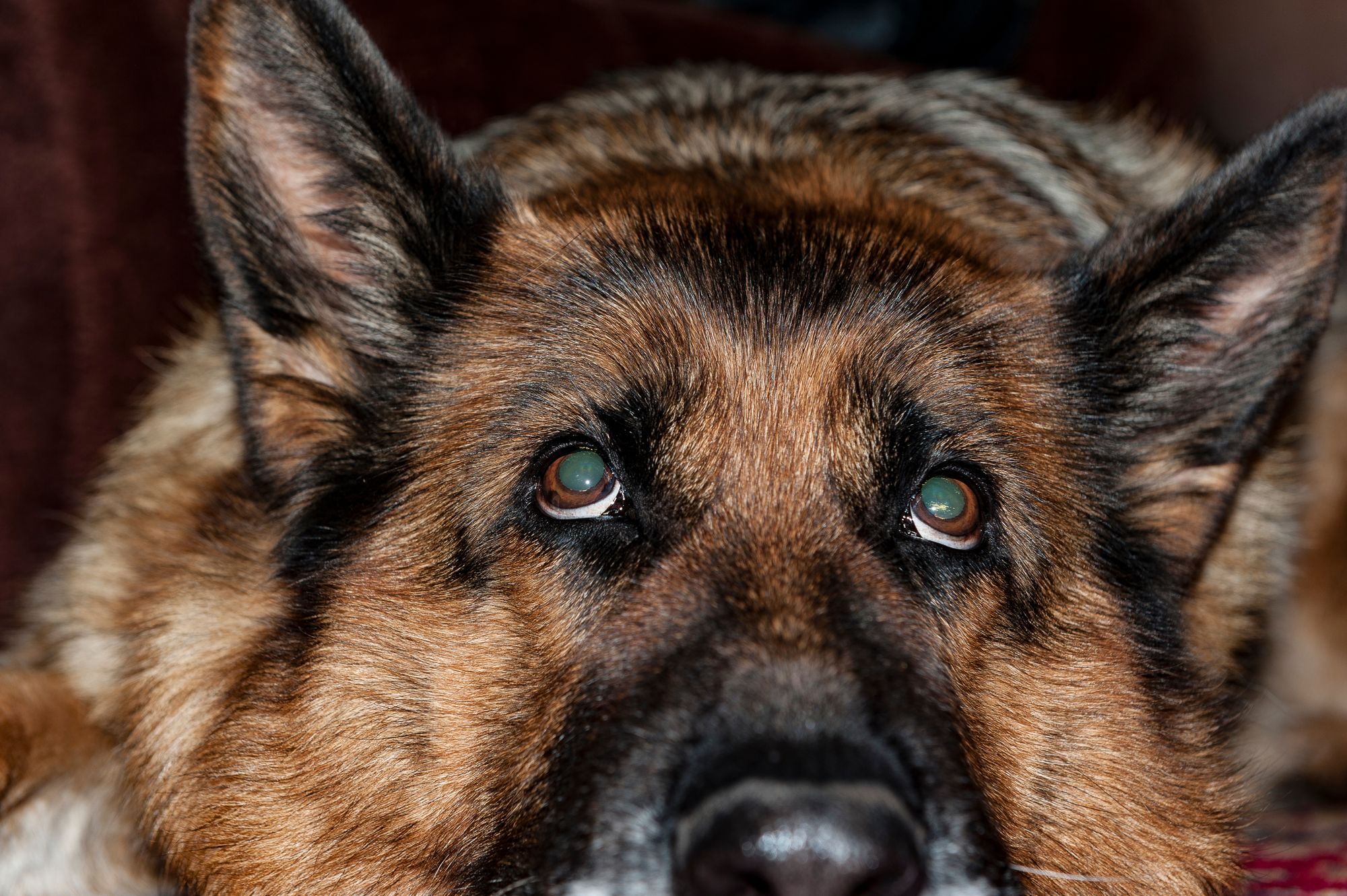
Conclusion
In conclusion, dog cataracts are a common eye condition that can affect dogs of all ages. Understanding their causes, symptoms, and treatment options is essential for providing the best care for your canine companion. If you suspect your dog has cataracts or notice any changes in their vision, consult your veterinarian promptly for a proper diagnosis and treatment plan.
FAQs
Here, we address some common questions and provide authoritative answers on various topics.
1. What are the common symptoms of dog cataracts?
- Common symptoms of dog cataracts include cloudiness or opacity in one or both eyes, changes in eye color, increased clumsiness or hesitation when navigating familiar spaces, and a decline in visual responsiveness.
2. Can cataracts in dogs be prevented?
- While not all cataracts can be prevented, you can reduce the risk by maintaining a healthy diet, avoiding exposure to harmful substances like tobacco smoke, and addressing underlying health conditions promptly. Regular veterinary check-ups are also essential for early detection.
3. How can I tell if my dog is going blind?
- Signs of progressive blindness in dogs include bumping into objects, difficulty finding food or toys, dilated or constricted pupils, and a noticeable decline in their ability to follow moving objects or navigate familiar spaces.
4. Is cataract surgery for dogs safe and effective?
- Cataract surgery for dogs can be highly effective and safe when performed by a skilled veterinary ophthalmologist. Success rates are generally high, with many dogs regaining significant vision and an improved quality of life.
5. How do I care for a blind dog?
- Caring for a blind dog involves maintaining a consistent environment, using scent and sound cues, dog-proofing your home, leash walking, providing mental stimulation, being patient and encouraging, maintaining a routine, and ensuring socialization and interaction.
6. What are the signs of a happy and healthy dog?
- Signs of a happy and healthy dog include a good appetite, a glossy and clean coat, a playful disposition, regular exercise and movement, normal bathroom habits, and a positive response to social interaction.
7. How can I prevent my dog from developing obesity?
- To prevent obesity in dogs, provide a balanced diet appropriate for their age and activity level, measure food portions, avoid excessive treats, and ensure regular exercise. Consult your veterinarian for a tailored feeding and exercise plan.
8. What should I do if my dog is overheating?
- If your dog is overheating, move them to a cool, shaded area, provide water, and use cool, wet towels to lower their body temperature. Avoid exposing them to hot environments, and contact your veterinarian if heat-related distress persists.
9. How often should I groom my dog?
- Grooming frequency depends on your dog's breed and coat type. In general, regular brushing, nail trimming, and occasional baths are essential. Consult breed-specific grooming guidelines and consult a professional groomer if needed.
10. What vaccinations does my dog need?
- Vaccination schedules may vary based on your dog's age, health, and location. Core vaccines typically include rabies, distemper, parvovirus, and adenovirus. Non-core vaccines may be recommended based on lifestyle and exposure risks. Consult your veterinarian for a personalized vaccination plan.
These FAQs aim to provide authoritative answers to common questions about dog health, care, and related topics. Remember that consulting with a veterinarian for specific concerns and guidance tailored to your dog's individual needs is always advisable.
